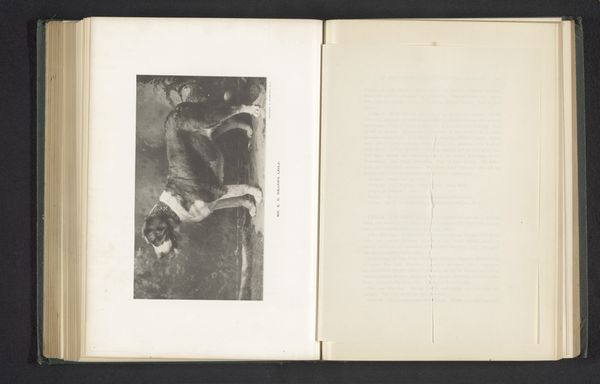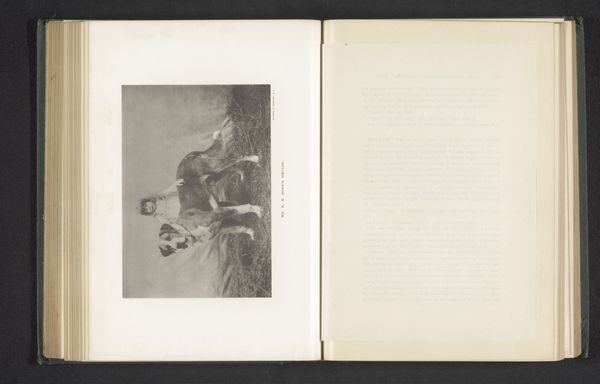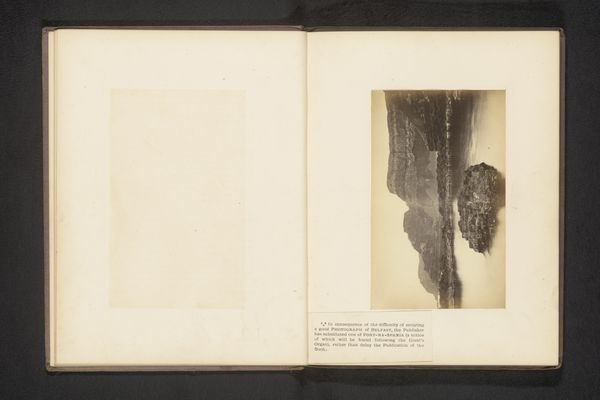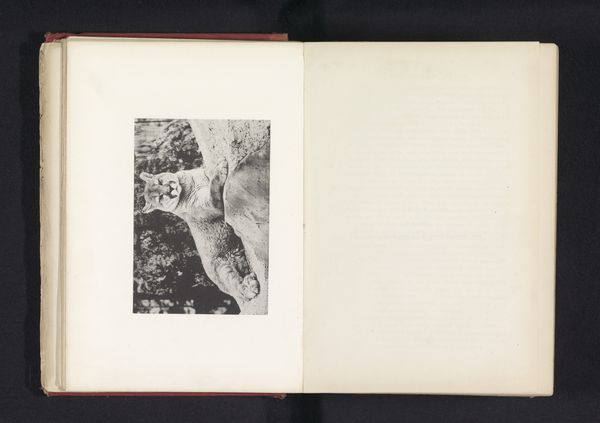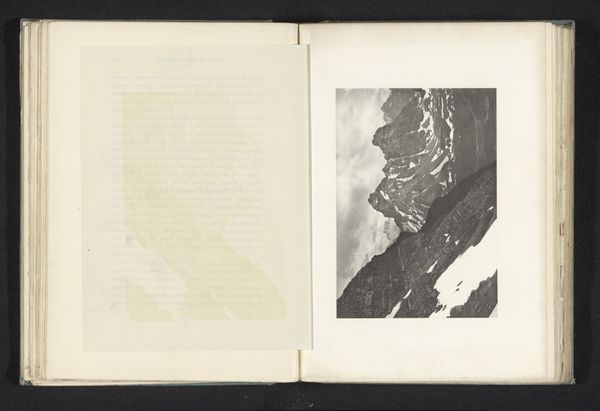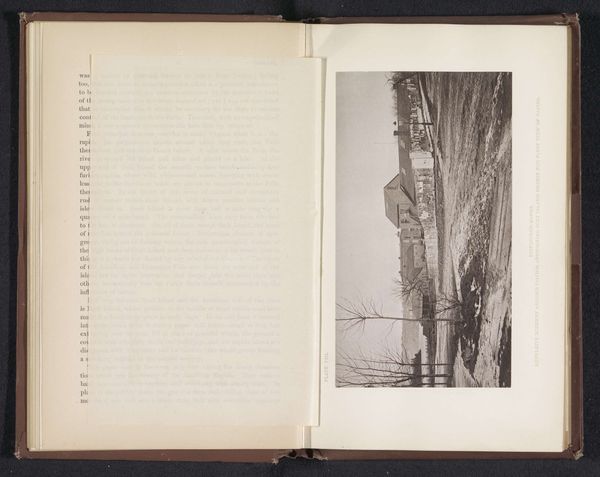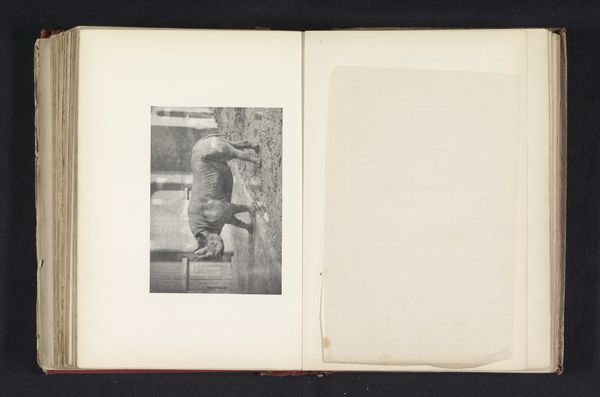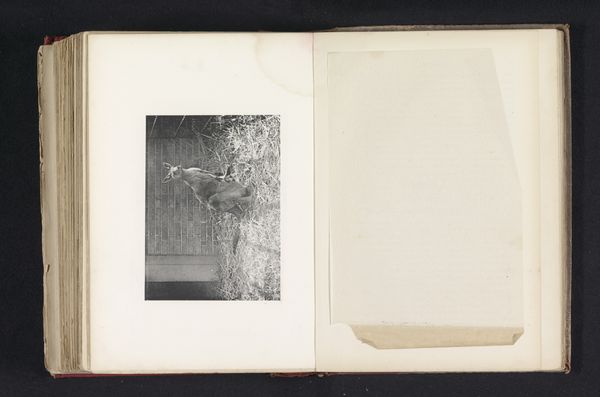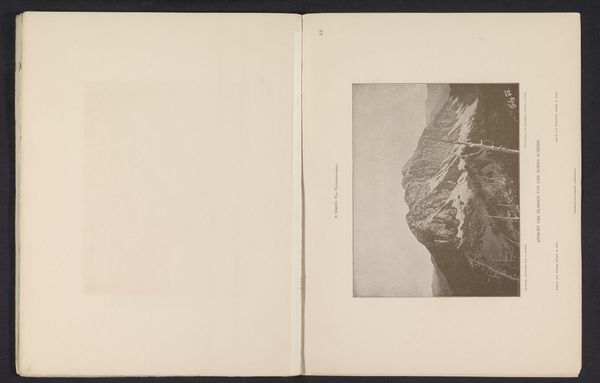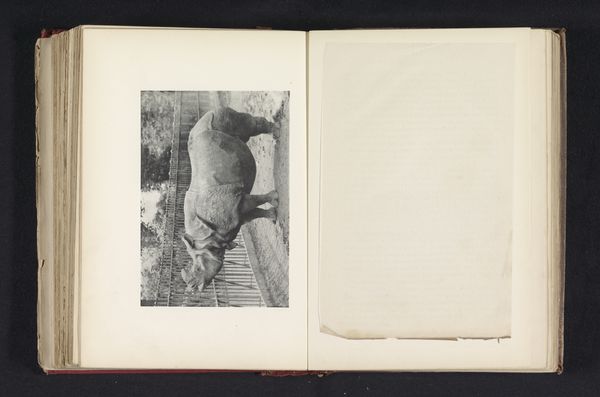
drawing, print
#
portrait
#
drawing
#
aged paper
#
homemade paper
#
paper non-digital material
#
paperlike
# print
#
sketch book
#
personal journal design
#
paper texture
#
personal sketchbook
#
folded paper
#
design on paper
#
realism
Dimensions: height 119 mm, width 196 mm
Copyright: Rijks Museum: Open Domain
Editor: So, this is a reproduction of a collie dog painting, pre-1888. It’s presented as a drawing or print within a book, giving it this really intimate, almost journal-like feel. What do you make of it? Curator: Well, consider the dog itself. Throughout history, the dog serves as a profound symbol of loyalty, companionship, and protection. And note how this collie isn't idealized – it's a working dog. What do we associate with Collies? What is its archetypal role? Editor: Lassie? Intelligence, care… trustworthiness? Curator: Exactly! Now, think about the Victorian era, when this reproduction likely emerged. The rise of pet culture, sentimental attachments, and a need for symbols of steadfastness within rapidly changing social structures. The book format, as you pointed out, amplifies the intimacy, suggesting personal reflection or a keepsake. It reflects a longing for something constant and reliable in an unstable world. The animal becomes the bearer of highly-valued human qualities. Do you notice how its posture also conveys something particular about the breed? Editor: Now that you mention it, the upright stance suggests pride and intelligence... it definitely isn't cowering. And the aged paper... that adds a layer of nostalgia, right? Curator: Precisely. Consider the cultural memory embedded in this seemingly simple image: it touches upon our deep-seated connection with animals, the values we project onto them, and the ways in which art serves as a vessel for emotional and cultural needs. Editor: I never thought a dog portrait could hold so much! Thanks for highlighting that for me. Curator: It’s been a pleasure. It shows how cultural meaning accrues, layering across time. The humble canine has surprising resonance.
Comments
No comments
Be the first to comment and join the conversation on the ultimate creative platform.

